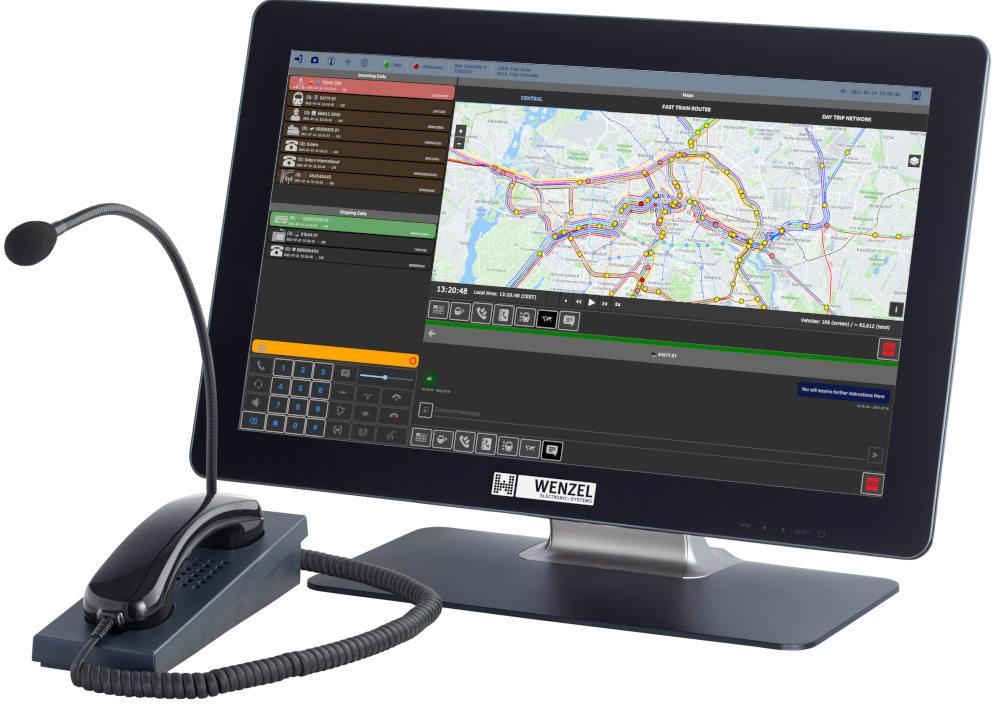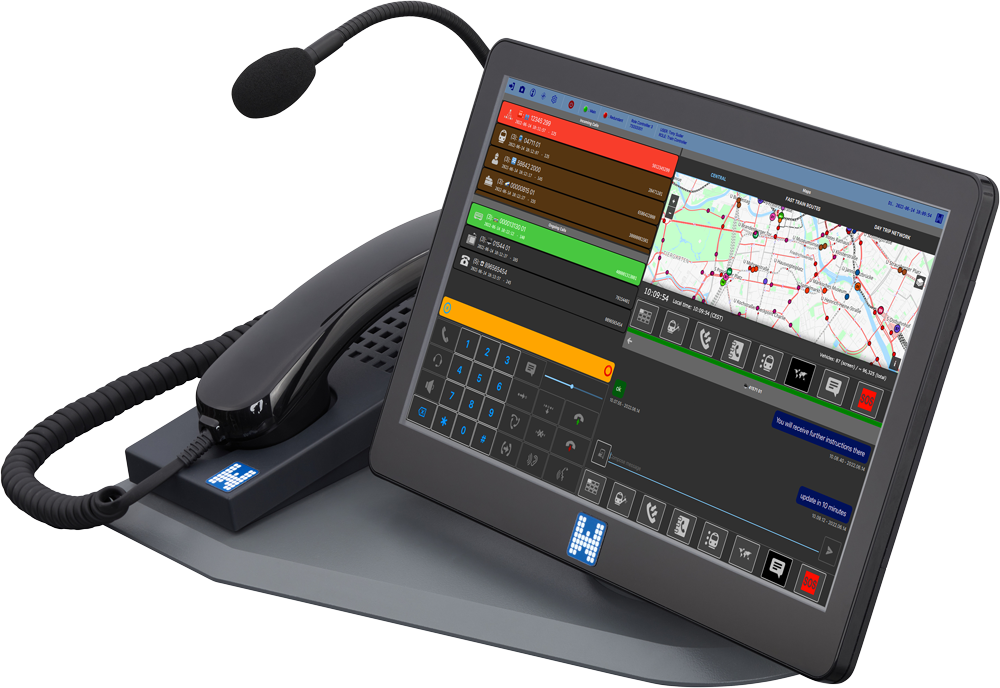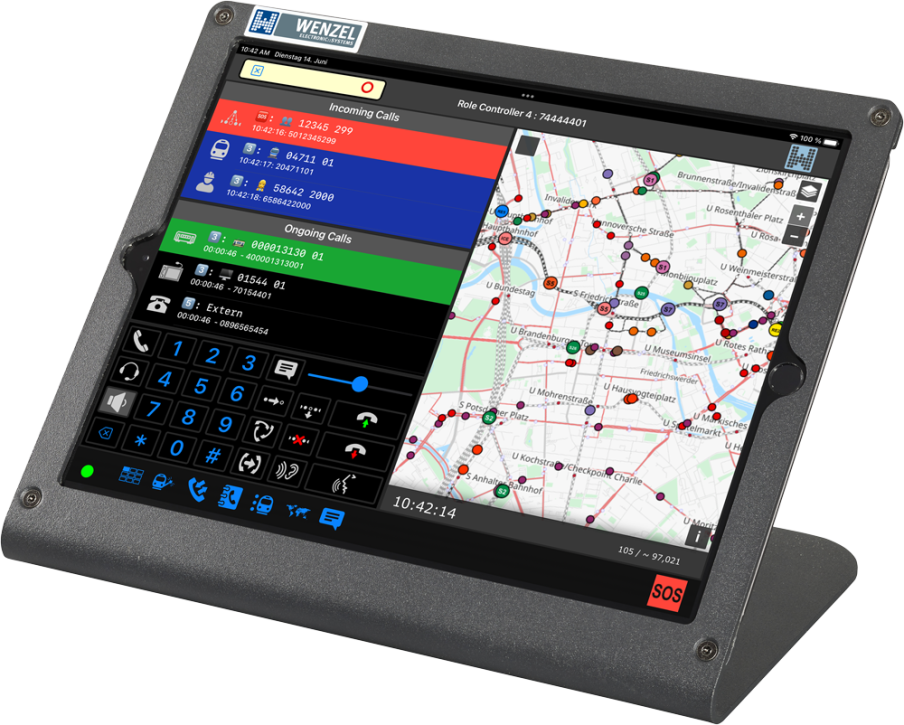Multiple synchronized user interfaces for one dispatcher+—
The user interface (UI) can also be displayed in a WEB browser window. This allows multiple operator instances that show different synchronized views at the same time. For example, it is possible to display a geographical overview of an area with all trains currently in it on an external browser view. Tapping on a train could then open a pop-up menu from which a message can be sent to that train or a call can be made or answered. At the same time, the integrated UI on the dispatcher terminal shows the usual default view.
Configurable user interface+—
Colors, frame widths, fonts, font sizes, etc. of the UI can be changed using so-called themes for the larger screens. The selection, layout and content of the control widgets that make up the UI and its functionality can be sufficiently adapted. However, the parts configured as binding remain permanently in place – as it was required for approval.
Redundant connection possible+—
VoIPv3 end devices can be integrated into any (also redundant) LAN topology via two redundant network connections. The switch built into most of our end devices provides additional cost reduction. Connected in a LAN ring, this helps to save central switch ports and/or cable routes.






